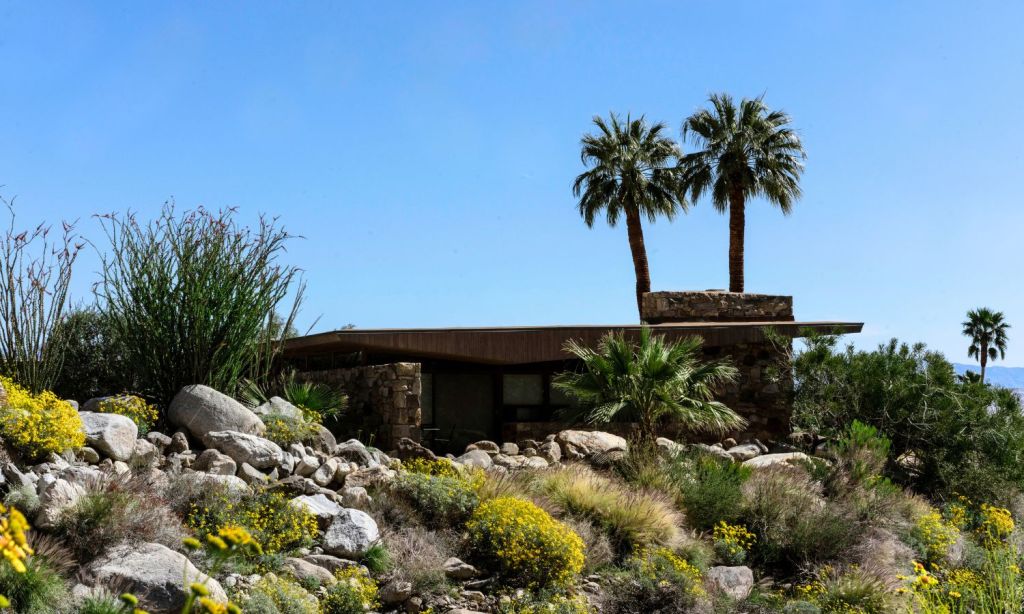Palm Springs is home to the world’s largest concentration of preserved, mid-century modern architecture and driving around its neighbourhoods is beyond breathtaking. From the desert, modernist abodes in Little Tuscany to the sleek, pastel-coloured doors dotted around Indian Canyon Drive, Palm Springs is an architectural lover’s dream. Even though we can’t see inside them, I’m sure they are just as impressive.
For now, I will just have to make do with gawking at the dreamy homes from the car window until I can afford my own Palm Springs postcode or at least replicate the mid-century modernism aesthetic in my home.
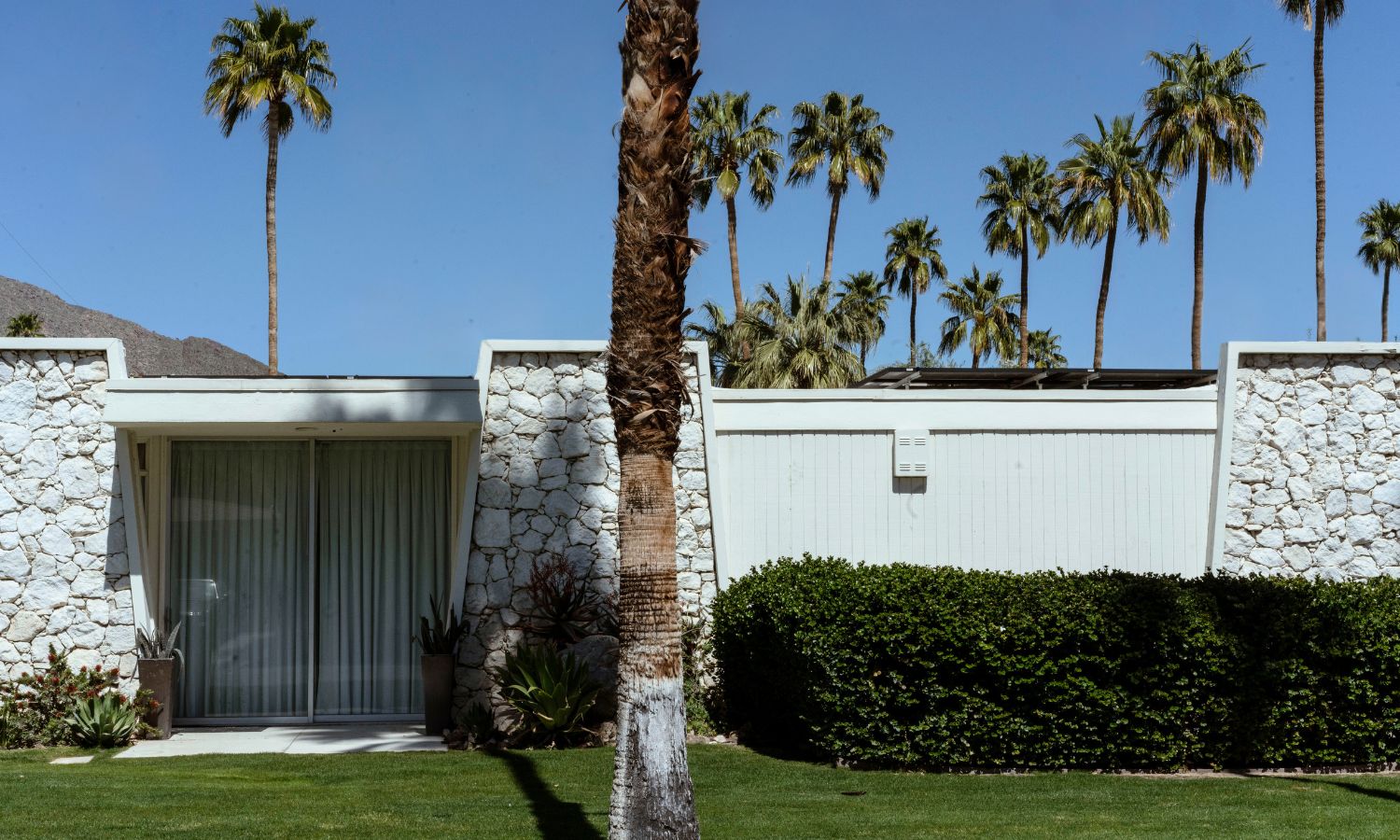
Mid-Century Modern Architecture
The city’s architecture is characterized by its mid-century modern style, which emerged in the post-World War II era and continued through the 1960s. This style was heavily influenced by the work of renowned architects such as Richard Neutra, Albert Frey, William Krisel, and Donald Wexler.
What defines mid-century modern style? Well, as I discovered on a self-guided tour with Modern Tours Palm Springs, it’s the use of clean lines, flat roofs, and open floor plans that integrate indoor and outdoor living spaces. The style also incorporates glass, steel, and concrete in construction, creating sleek and minimalist designs that emphasize functionality and simplicity.
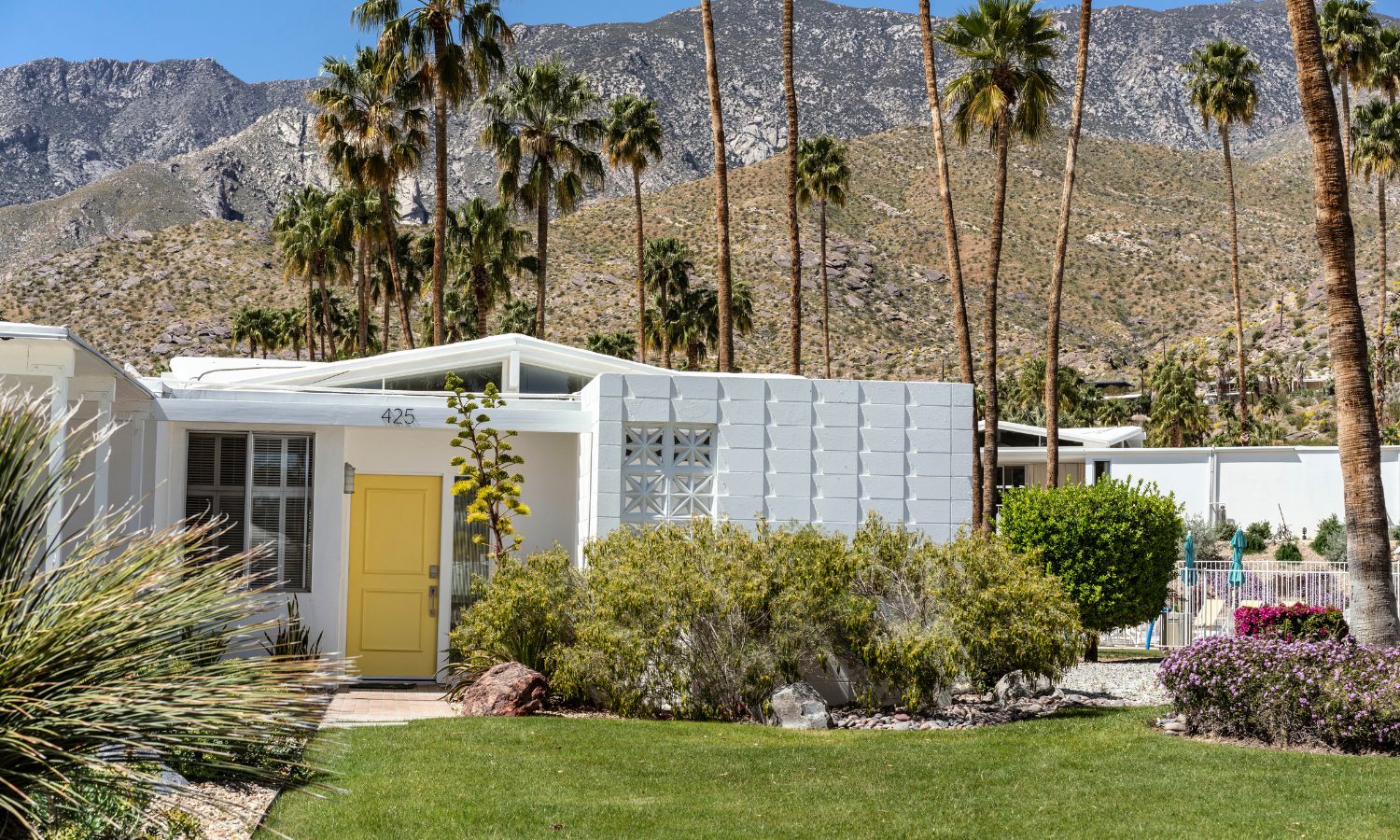
One of the most famous examples of mid-century modern architecture in Palm Springs is the Kaufmann House, designed by Richard Neutra in 1947. This iconic home features a flat roof, floor-to-ceiling glass walls, and a swimming pool that is seamlessly integrated into the design. The house is a masterpiece of mid-century modern design and has become a symbol of the architectural style that defines Palm Springs.
William Krisel is another prolific mid-century modern architect in Palm Springs, responsible for designing many of the iconic homes in the city. Some notable examples of his work include Alexander Homes, the Twin Palms Estates, and the Ocotillo Lodge.
Albert Frey designed the Tramway Gas Station, which is now the Palm Springs visitor centre. You can find examples of mid-century modern architecture all over the city, particularly on Indian Canyon Drive and West Vista Chino Road.
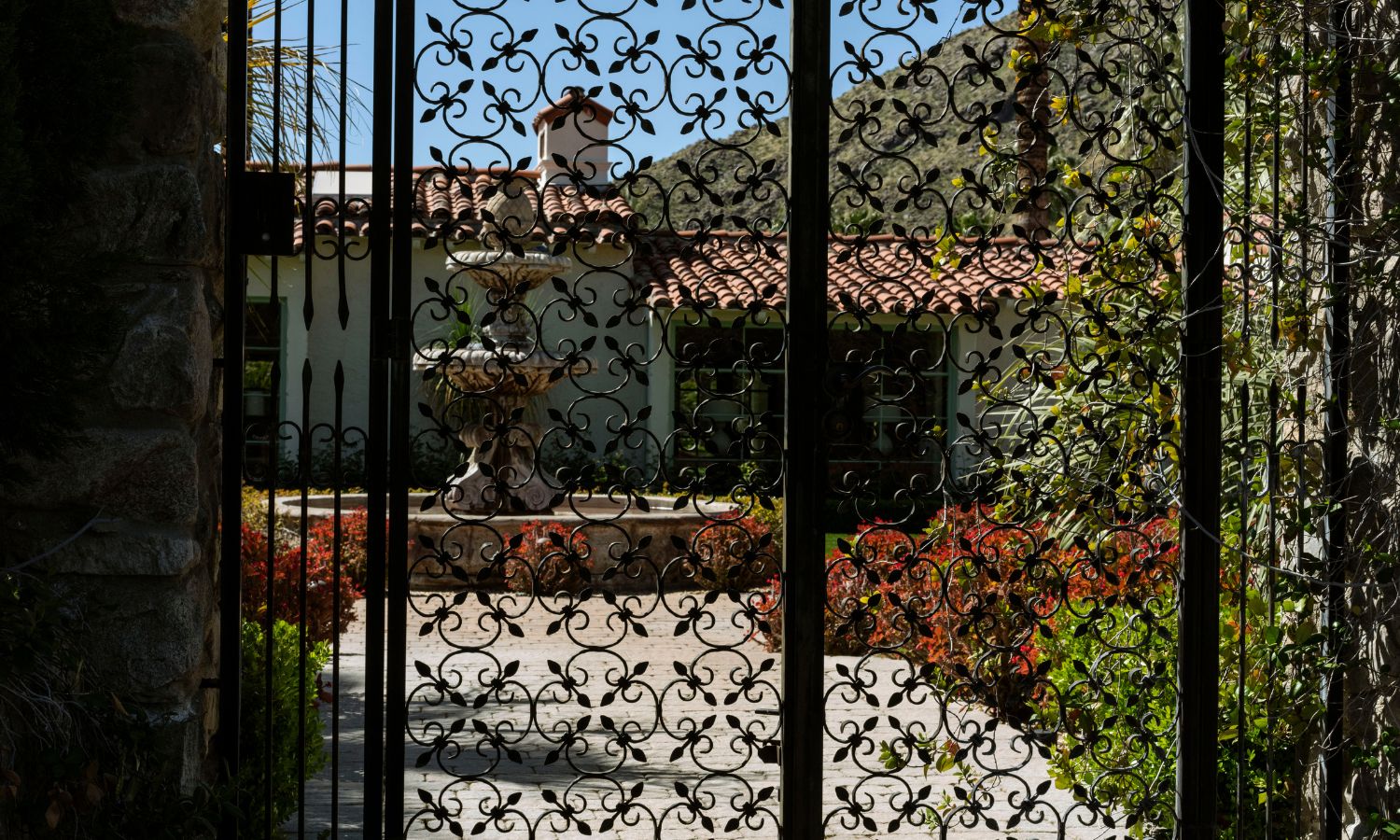
Spanish Colonial Revival
This style is characterised by its use of red tile roofs, stucco walls, and wrought iron details. The style was popularized in the early 20th century and can be seen in many historic buildings throughout Palm Springs, including the Ingleside Inn and the El Mirador Tower.
If you drive around the historic neighbourhood of Old Las Palmas, located just north of downtown Palm Springs, you will find beautiful examples of Spanish Colonial Revival. Vista Las Palmas also has a few examples if you look hard enough.
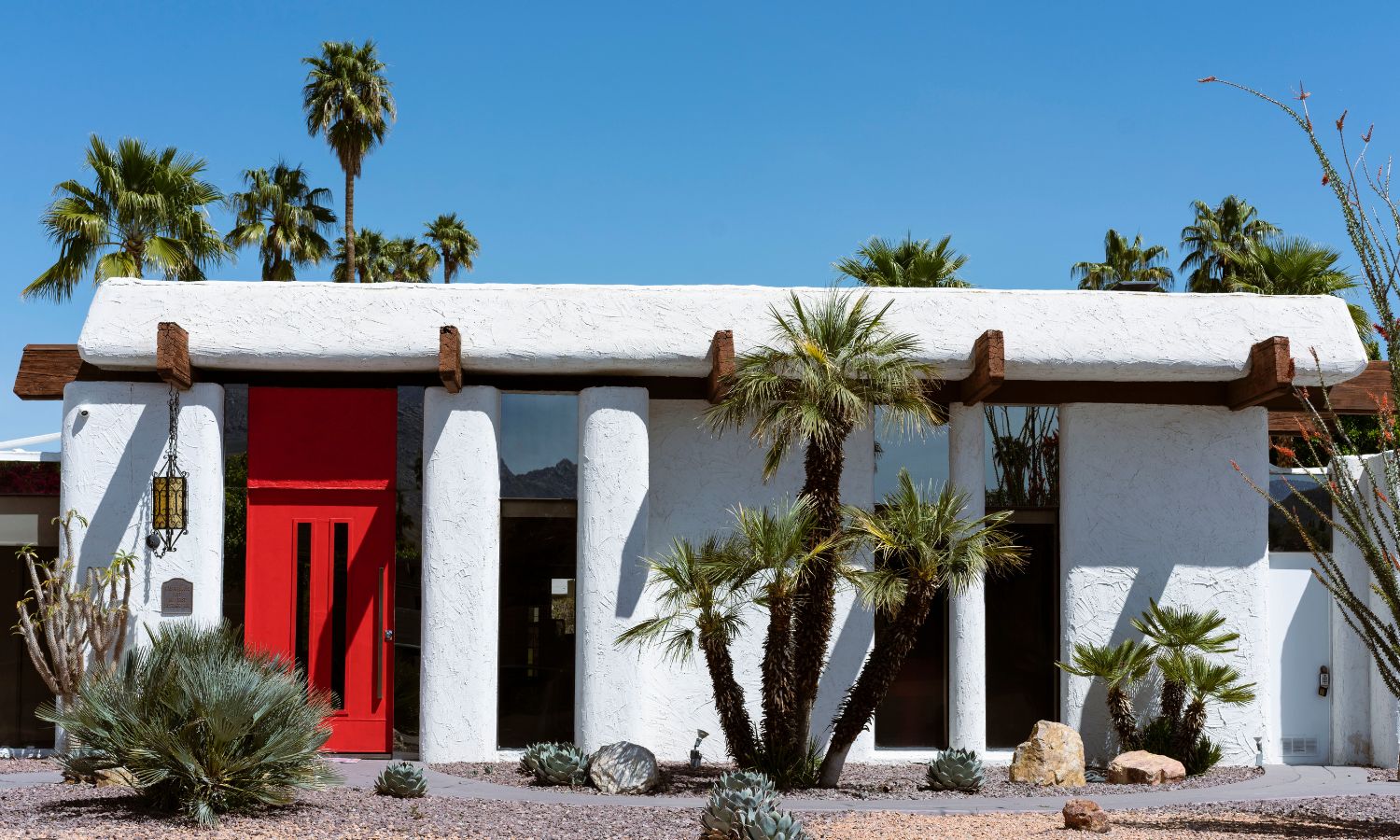
Desert Modernism
In the mid-20th century, Palm Springs welcomed Desert Modernism, an architectural style characterized by minimalism, functionality, and an emphasis on using natural materials. This architectural style was developed as a response to the harsh desert environment, with architects and designers seeking to create homes and buildings that blended seamlessly with the surrounding landscape.
The use of natural materials such as stone, wood, and glass was a hallmark of Desert Modernism. Architects sought to create both functional and aesthetically pleasing buildings while also providing a sense of tranquillity and harmony with the surrounding environment. Additionally, the style often incorporated large windows, outdoor living spaces, and other design elements that took advantage of the area’s mild climate and abundant sunshine.
Desert Modernism was a significant departure from the more ornate styles that had been popular in the early 20th century, such as Spanish Colonial Revival and Art Deco. It remains an important part of Palm Springs’ architectural heritage and continues to inspire architects and designers around the world. Many homes and buildings designed in this style have been beautifully preserved. You can find the Edris House, a Palm Springs landmark in Little Tuscany atop a hill and several other desert-style homes in Litte Tuscany Estate.
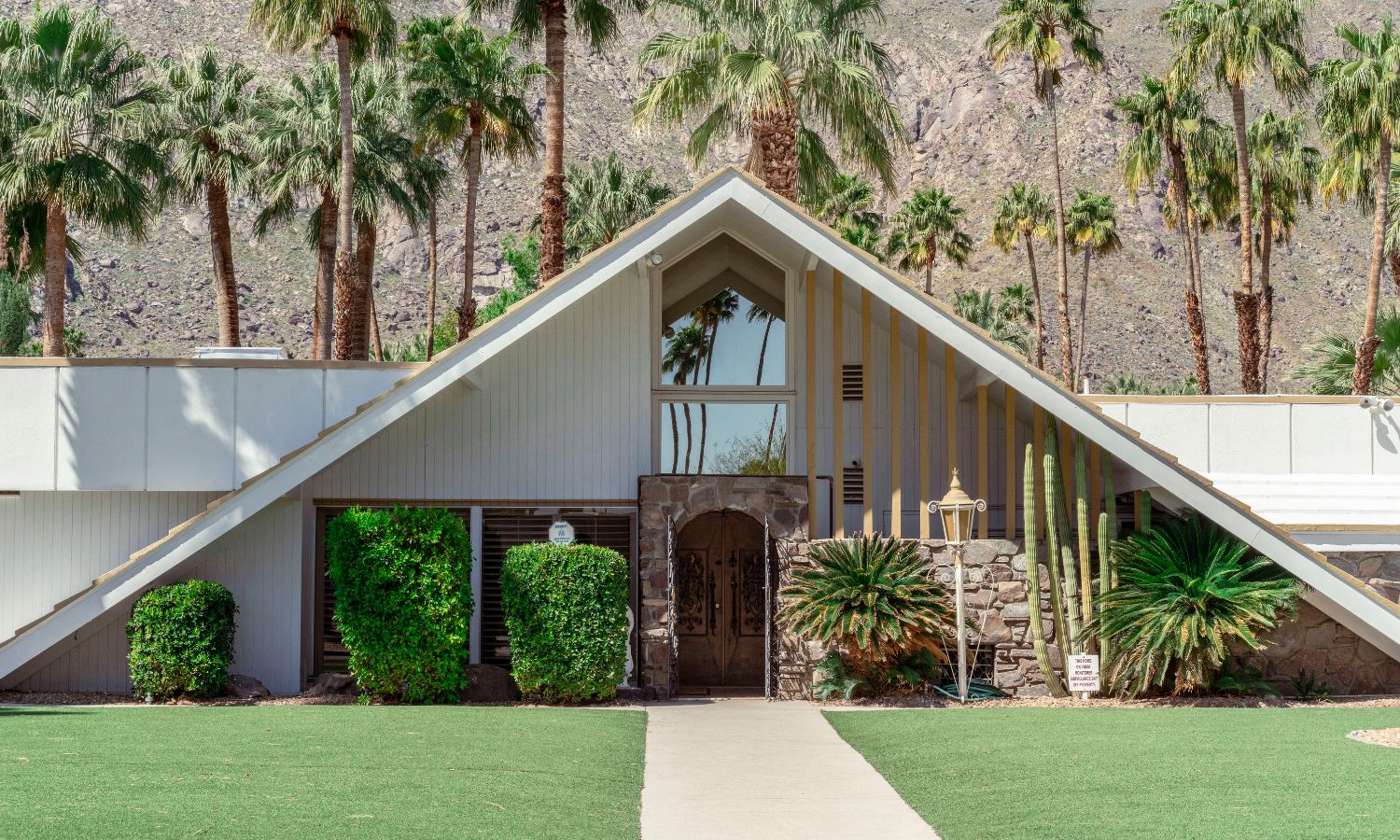
Swiss Miss
The last place you’d expect to find a Swiss chalet-style home in Palm Springs, but here we are. Swiss Miss homes were popular in Palm Springs during the mid-century modern era, as residents sought to create stylish and functional homes. The style often incorporated large windows, open floor plans, and other design elements that took advantage of the area’s mild climate and stunning natural surroundings.
One of the most famous Swiss Miss homes in Palm Springs is the “House of Tomorrow,” designed by architect Albert Frey in 1960 and was Elvis Presley’s honeymoon home. This iconic home features a unique circular design and an enormous dome-shaped roof, giving it a truly distinctive appearance.
Another striking example is one found in Vista Las Palmas, designed by architect Charles Dubois in 1958. The Pitched A-frame roof is unmissable, as are the surrounding palm trees and dramatic mountain backdrop.
Related: Celeb Home Tours, Hot Springs, and Art: Why Palm Springs Is a Cultural Hotspot
Related: Andy Samberg’s ‘Palm Springs’ Is the Modern-Day ‘Groundhog Day’


